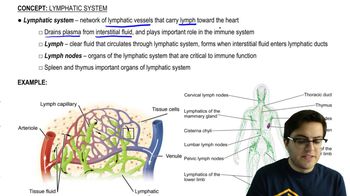In which of the following organisms does oxygen diffuse directly across a respiratory surface to cells, without being carried by the blood?
a. A grasshopper
b. A whale
c. An earthworm
d. A mouse
 Verified step by step guidance
Verified step by step guidance Verified video answer for a similar problem:
Verified video answer for a similar problem:



 6:28m
6:28mMaster Gas Exchange and Circulation with a bite sized video explanation from Jason
Start learning